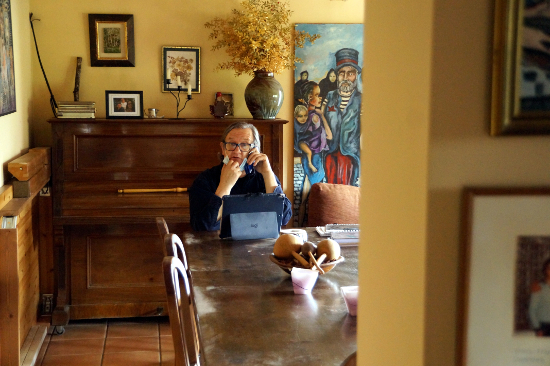Remote working in Catalonia doubled since pandemic started
Highest peak ever reached during first Covid-19 wave in 2020 with over 20% of employees working remotely

Remote working has seen a surge in Catalonia after almost two years of the Covid-19 pandemic. The health crisis has pushed employees to work from home in numbers never seen before, such as in the second quarter of 2020 when 21.2% of Catalan workers worked remotely.
Overall that year, on average 17.7% of employees worked from home, a similar figure to 2021’s average of 17% of people working from home occasionally or at least more than half of the week, according to data from the Labor Force Survey (EPA in Catalan).
The figure recorded in 2021 doubles the one from 2019 when only 8.6% of the EPA survey respondents, 294,800 employees, worked remotely. The metric rose threefold compared to five years ago (2017) with 167,000 workers performing from home (5.1%).
Over half a million working remotely
The first wave of the pandemic in Catalonia forced over half a million (684,500 Catalans) to work from home between April and June 2020, the highest figure ever recorded. Early in March that year, the Catalan government had already insisted companies work remotely as much as possible due to coronavirus.
At the time, there was no law regarding how to work from home, except that the company had to give all the necessary equipment. That changed in September 2020, when the Spanish government approved a new regulation saying that the implementation had to be agreed upon between worker and employer. When the law was announced, 17.9% of Catalans were working remotely.
From there, remote working figures increased and decreased as the pandemic unfolded. Late in 2020, when Catalonia was in the middle of the second Covid wave, the executive pushed to work from home when possible. Increasing the metric to 19.3% of employees working remotely before the end of the year.
The figure still had more room to grow when early 2021, the number reached 20.5% of workers working remotely as the third wave of the pandemic hit the territory.
Since then, numbers show workers have returned to their workplaces, especially during summer 2021 when the number dropped to 14.7% and it increased a little in the last quarter of the year when 15.4% of workers worked from home coinciding with the arrival of the Omicron variant.
All these metrics are "asymmetrical" and reflect that people "instead of remote work are working from home" Josep Lladós an expert at the Economists Association of Catalonia and a professor at Online University of Catalonia (UOC) said to the Catalan News Agency (ACN).
The characteristics of remote working are different from working from home and aren’t always met, Lladós claimed. The figures right now are low but "once people learn to work remotely," and they understand it is not the same as "working from home," Lladós explained, the metrics will increase.
Europe, Spain, and Catalonia: three different metrics
Catalonia’s work-from-home figures are much lower compared to European countries such as Austria, the Netherlands, or Finland. However, they are higher than the ones in Spain.
The difference is interesting as 7.3% of Spaniards worked from home in 2017, in Catalonia the figure was 5.1% at the time. But, two years later, the Catalan territory has surpassed Spain in the metric.
In the second quarter of 2020, 19.1% of Spaniards worked remotely (21.2% in Catalonia). Two years later, in the last quarter of 2021, the number had dropped to 13.6% of staff working from home (15.4% in the Catalan territory). Overall in 2021, 14.4% of the Spanish working population did not go to their workplace.
Future of remote working
There is currently a "change of culture" the UOC professor told ACN, adding that people will still be working remotely "but not as much as we’ve seen so far." In fact, some experts had already predicted that working from home would last until the pandemic finished, or even longer.
"Companies and workers have seen that working remotely works despite not being well received or not used before," Lladós said. "Workers and companies have learned to be efficient."
Some companies even have already tested a new working method for the post-Covid era. A four-day week and working from home, while others are already aware that they will not return to full in-person employment.
Listen to our podcast from November on working from home to learn more about how companies copped during the Covid-19 pandemic.